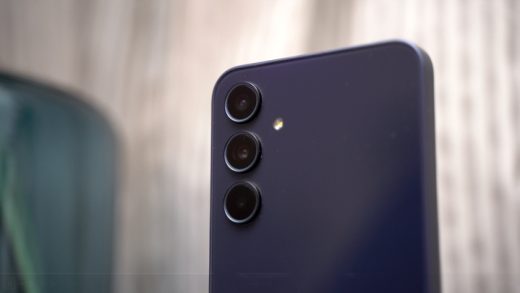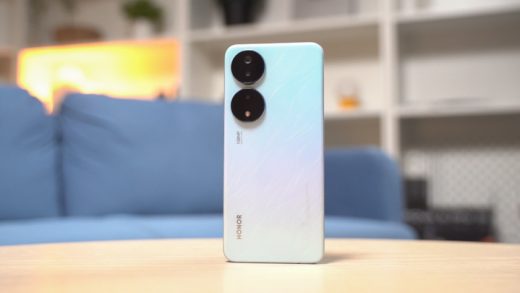This week, Xiaomi launched the Redmi K30, a successor to its flagship-killer handset, the Redmi K20. We decided to pit it against another of Xiaomi’s own, the Mi Note 10. While they’re both powered by a Snapdragon 730G processor, the handsets have several differences to them, such as their design, cameras, battery capacity, and more. Check it out.

| REDMI K30 | XIAOMI MI NOTE 10 |
|---|---|
| 6.67-inch display, FHD+ 1080 x 2400 resolution, Corning Gorilla Glass 5, with support for HDR10 and 120Hz refresh rate, 20:9 aspect ratio | 6.47-inch curved AMOLED FHD+ 1080 x 2340 resolution, 400000:1 contrast ratio, HDR and DCI-P3 wide color gamut, Corning Gorilla Glass 5, 19.5:9 aspect ratio |
| Snapdragon 730G chipset | Snapdragon 730G chipset |
| 6GB / 8GB RAM | 6GB RAM 8GB RAM (Mi Note 10 Pro) |
| 64GB / 128GB / 256GB UFS2.1 storage | 128GB storage 256GB storage (Mi Note 10 Pro) |
| Expandable up to 256GB via micro SD | No expandable storage |
| 64MP + 8MP + 2MP + 2MP quad-rear cameras | 108MP F1.69 OIS lens main + 12MP F2.0 2x optical + 5MP F2.0 5x zoom + 20MP F2.2 ultra-wide + 2MP F2.4 macro penta-rear cameras |
| 20MP + 2MP dual front cameras | 32MP front camera |
| Dual SIM | Dual SIM |
| 4G LTE | Dual 4G VoLTE |
| Wi-Fi 802.11 a/b/g/n/ac | Wi-Fi 802.11 a/b/g/n/ac |
| Bluetooth 5.0 | Bluetooth 5.0 |
| 3.5mm headphone jack | 3.5mm headphone jack |
| USB-C port | USB-C port |
| - NFC support - side-mounted fingerprint sensor - IR blaster | - IR blaster - In-display fingerprint scanner - Face unlock - NFC |
| 4,500mAh battery with 27W fast charging support | 5,260mAh with 30W charging support |
| MIUI 11 (Android 10) | MIUI 11 (Android 9 Pie, upgradeable to Android 10) |
Summary of advantages:
Xiaomi Redmi K30
- Larger display size
- Two RAM options
- Three storage options
- Expandable storage
- Dual front cameras
- Android 10 out of the box
Xiaomi Mi Note 10
- Curved display
- Five rear cameras
- Larger front camera resolution
- Larger battery capacity
The Redmi K30 comes as the bigger one of the two smartphones, with its display measuring at 6.67-inches, while the Mi Note 10 sports a 6.47-inch display. Both panels do have an FHD+ 2340 x 1080 resolution and are also protected by Corning Gorilla Glass 5. When it comes to the aspect ratio, the K30 slightly edges out the Mi Note 10 as it has a 20:9 aspect ratio, thanks in part to its slim bezels and its pill-shaped hole punch for its dual front cameras. While the Mi Note 10 has a drop notch, it’s also a rather attractive due to its curved display.
Under the hood of both smartphones is a Qualcomm Snapdragon 730G chipset. The K30 offers two RAM options, 6GB and 8GB, and also three storage variants, 64GB, 128GB, and 256GB. As for the Mi Note 10, it only has one offering at 6GB RAM and 128GB storage; however, the more premium Mi Note 10 Pro has an 8GB RAM + 256GB configuration. For those looking to expand their storage, the K30 offers up to 256GB via micro SD. Unfortunately, the Mi Note 10 doesn’t come with any form of storage expansion. With their SD730G chipset, both handsets are capable of handling basic tasks, social and web media browsing, media streaming, gaming, and the like.
As mentioned earlier, the K30 comes with a pill-shaped cutout design on its display, housing the 20MP + 2MP dual front cameras. On the other hand, the Mi Note 10 possess a drop notch where the 32MP front camera resides. Occupying the rear of the K30 is a quad-camera setup, composed of 64MP + 8MP + 2MP + 2MP shooters. Meanwhile, the Mi Note 10 trumps in terms of numbers with its penta-camera setup, made up of 108MP + 12MP + 5MP + 20MP + 2MP snappers. Quantity aside, we’ve yet to see how the images produced by the handsets compare in terms of quality.
Xiaomi produces the two devices, so it’s not strange to see that they both have NFC support and an IR blaster. The Mi Note 10 employs an in-display fingerprint scanner, while the K30 utilizes a side-mounted fingerprint scanner. For battery, the Mi Note 10 comes out on top with its 5,260mAh capacity and support for 30W charging, in contrast to the K30’s 4,500mAh battery with 27W fast-charging support. The K30 and Mi Note 10 also come equipped with a 3.5mm headphone jack and USB-C port.
Out of the box, the K30 comes with MIUI 11, based on Android 10. While the Mi Note 10 has MIUI 11 based on Android 9 Pie, users need not worry as the handset is upgradeable to Android 10.
The Redmi K30 and the Mi Note 10 are priced as follows:
- Redmi K30 6GB + 64GB – CNY 1,599
- Redmi K30 6GB + 128GB – CNY 1,699
- Redmi K30 8GB + 128GB – CNY 1,899
- Redmi K30 8GB + 256GB – CNY 2,199
- Xiaomi Mi Note 10 (6GB + 128GB) – PHP 25,990
Xiaomi launched the Redmi K30 a couple of days ago, while the Mi Note 10 saw its global launch last November. The Mi Note 10 is available in authorized Mi Stores today. Sure enough, the Redmi K30 will receive a global release seeing that its predecessor, the Redmi K20 went global as the Xiaomi Mi 9T and arrived in the Philippines.
The slight differences and nearly similar features of the Redmi K30 and the Mi Note 10 makes it difficult for users to decide on which smartphone to get. As the Mi Note 10 finally saw a local release, it’ll probably boil to when the K30 will arrive in our shores under a different name and how much its’ local price will be. We’ll have to wait and see.

























You should at least included the converted price to PHP so it will be easy to compare the prices.
side mounted fingerprint for k30
Thanks for the correction! We’ve updated the article to reflect this.